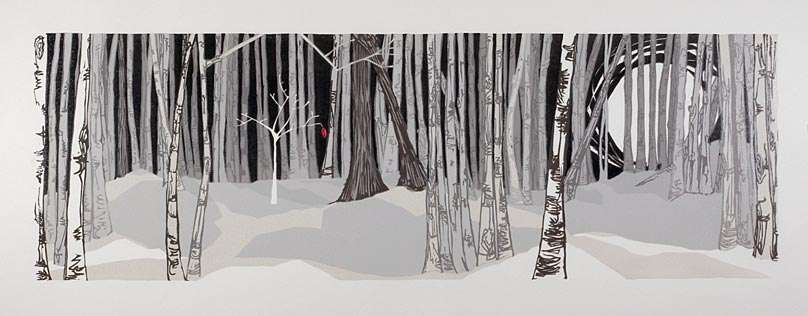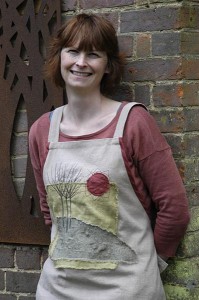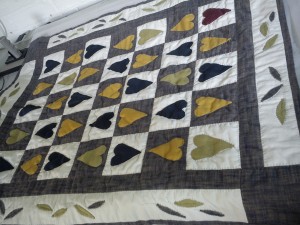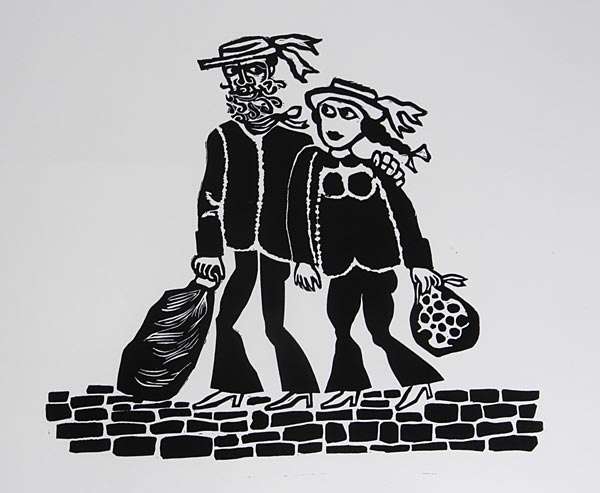I’ve got a show on at the moment down at the Margate Gallery (it’s on until 20th May if you happen to be visiting). I grabbed the opportunity while there to visit the Turner Contemporary. Brilliantly I chose the day the gallery was celebrating its birthday and they gave me a goody bag with a large pink sparkly cupcake inside. No pass the parcel, but you can’t have everything…
Anyway, Turner: what a very clever man he was and how I envy that ability to catch light and shadow. I do try and depict our fabulously unpredictable climate in my prints and I’m always looking for new ways of saying ‘about to rain’ or ‘sun on snow’ etc, but my language is the removed one of printmaking rather than the immediate splash of watercolours. Normally I work with oil based relief inks on lino or with watercolour and rice paste on woodblock, but, excited by Turner and the E numbers in the cup cake icing, I wanted to see if I could get close to a watercolour sketch with lino. One of my experiments is below, a little illustration of the Lincolnshire fens which I drive through when visiting my sister. It’s done in water based ink, a mix of Schminke inks and Graphical Chemical, with an awful lot of extender added for transparency. It’s printed on Zerkal paper which is fine for small prints, but I’ve found to cockle on a larger scale.
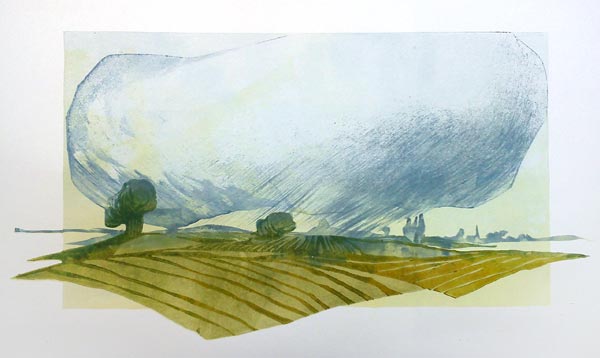
You’ll notice that I’ve used a brush to put rain into the print. Normally I work with rollers on lino. This time I used a damp but bristly decorator’s brush and swept the ink onto the block before printing it immediately. The trick is to confine yourself to simple bold strokes; the moment you get fussy you lose the definition of the brush stroke.
You’ll never produce an identical edition this way, but that’s never bothered me particularly: the weather’s never the same two days running, so why should my prints all match?


